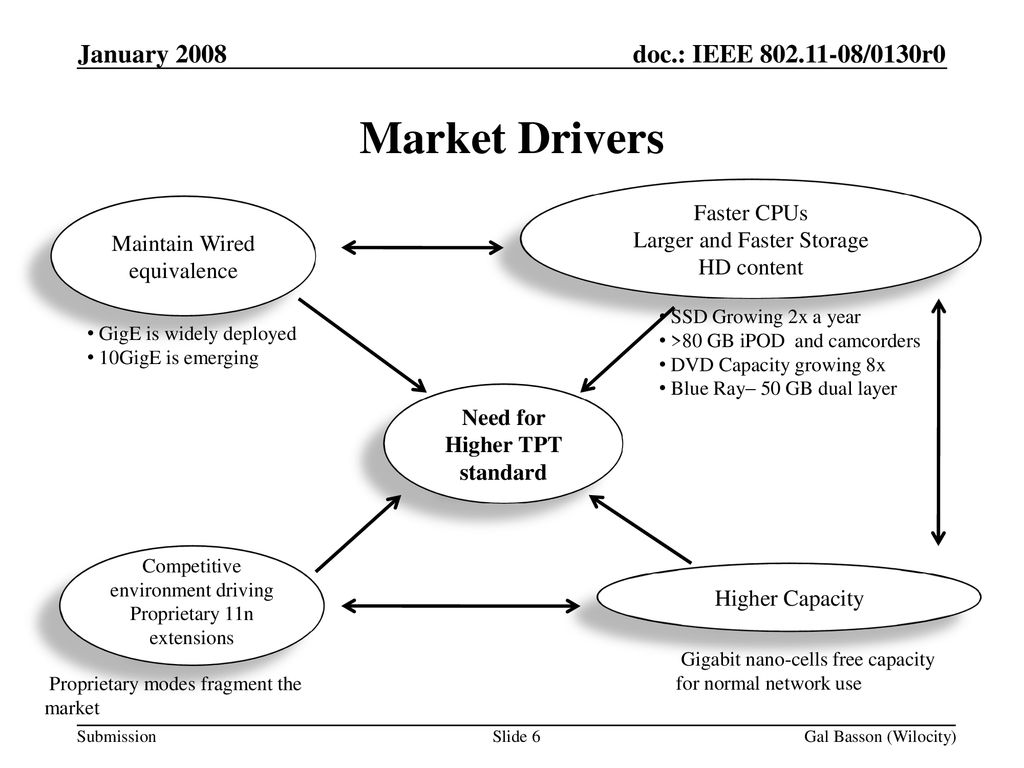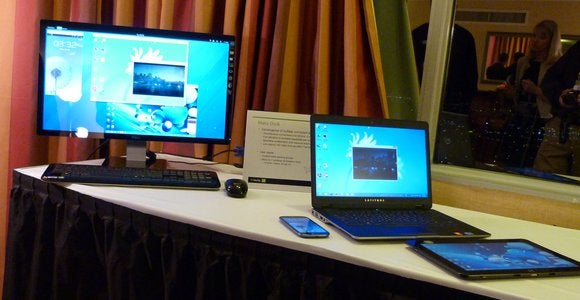Go back –> Atheros Linux wireless drivers
Here is 1 driver compatible with PCI VEN1AE9&DEV0310&SUBSYS00001AE9. This is Device ID of Qualcomm 11ad Wireless Network Adapter - QCA6320/QCA6335. Device or core chip manufacturer is Wilocity Ltd. Download Wi-Fi device drivers or install DriverPack Solution software for driver scan and update.
Contents
- What works
- Debug facilities
The wil6210 driver supports several 60GHz wireless card by Qualcomm (1-st ones was originally made by Wilocity; later Wilocity got acquired by Qualcomm). Hardware provides WiFi and wireless PCIE connectivity, as described in the WiGig WBE spec. Driver supports WiFi only. All cards are PCIE devices
Some cards have 60G device combined with Atheros 2.4/5.2 GHz WiFi card. On the PCI, it is represented as the following hierarchy:
Chip consists of the root bridge 1ae9:0101, with 4 ports 1ae9:0201. One port routed to separate Atheros card 168c:0034, it is handled by the ath9k driver. Another port connected to the wil6210 device 1ae9:0301, that is on the same chip. 2 empty ports may be populated when connecting in WBE (PCIE-over-60g) mode.
Devices 1ae9:xxxx except 1ae9:0101 are configurable from the firmware, and may wary depending on the FW build. In particular, slots 1ae9:0201 may be represented slightly different, using device ID 0200, 0201, 0202, 0203.
Wilocity Driver Download Windows 7
Warning! It may be that WiFi device 1ae9:0301 is not visible. This is the case if FW build is WBE-only. If you see this, please contact Wilocity http://wilocity.com/ to obtain and flash FW with WiFi support.
wil6210 device, 1ae9:0301, has one 2Mb BAR.
Depending on card flavor and generation, Atheros 2.4/5.2 GHz WiFi (device 168c:xxxx) may be present or not. Device IDs for 60G device may also differ. Currently, it may be 1ae9:0301 or 1ae9:0310
For the WiFi connection, implemented is 802.11ad spec. Supported are channels 1..3 with corresponded frequencies 58320, 60480, 62640 MHz.
wil6210 use cfg80211 framework, but not mac80211.
- sniffer. Due to hardware limitation it captures either only CP (control PHY) or DP (data PHY) frames
- managed mode. works well even with network-manager GUI. Require up-to-date wpa_supplicant.
- AP mode. Up to 8 simultaneous connected stations supported
- security. supported is GCMP, it is the only allowed cipher accordingly to the spec.
Driver designed in a way that hardware start running only when network interface brought up, with either 'ifconfig up' or starting AP. All settings made before are cached in the driver but not passed to the hardware.
iw commands supported
iw link: query link status. Report current MCS.
- rtap_include_phy_info
- Include PHY info in the radiotap header, default - no (bool)
- use_msi
- Use MSI interrupt: 0 - don't, 1 - (default) - single, or 3 (int)
- debug_fw
- load driver if FW not ready. For FW debug (bool)
- max_assoc_sta
- Max number of stations associated to the AP (uint)
- no_fw_recovery
- disable automatic FW error recovery (bool)
- no_fw_load
- do not download FW, use one in on-card flash. (bool)
- itr_trsh
- Interrupt moderation threshold, usecs. (uint)
- mtu_max
- Max MTU value.
- rx_ring_order
Rx ring order; size = 1 << order
- tx_ring_order
Tx ring order; size = 1 << order

wil6210 support set of interrupt handling modes:
- INTx - legacy pin interrupt. Do not use if possible. - 1MSI - one MSI interrupt. This is the default mode. - 3MSI - 3 MSI interrupts for {Tx, Rx, Misc}.
For interrupt handling mode, probed is highest one specified with @use_msi, with fallback:
3MSI -> 1MSI -> INTx
On the x86 platform, multiple MSI interrupts are not supported with recent kernel (3.17).
When debug_fw set to true, driver probe will not fail if firmware do not report 'ready' event. This is to aid firmware boot issues debugging.
To configure wil6210 in sniffer mode (assume $WLAN set to network interface name):
Due to hardware/firmware deficiency, sniffer can capture either only control PHY (CP) or only data PHY (DP). To configure for desired PHY type do, after configuring for monitor mode:
For CP:

For DP:
Finally, bring interface up:
- P2P and FST flows
- various offloads
- Basic support for 802.11ad merged into kernel 3.6
- The driver merged into kernel 3.8.
- Patches for hostapd/wpa_supplicant submitted, some part is already merged.
We need to get this publicly available...
In the current version, firmware stored in the flash memory on the NIC and not downloaded by the driver. Firmware flashing required for the upgrade only.
To start AP mode, use recent wpa_supplicant (assume relevant patches already merged). Sample config for non-secure mode:
Sample config for secure mode. Note GCMP cipher:
Control communication with the card is done through so called WMI commands and events. Target access to the mailbox within memory in BAR0 used. There are 2 similar mailbox structures: one for host->card commands, and one for card->host events.
DMA using 'vring' structures. Vring in consistent memory; hold descriptors that points to the data buffers. Card to write status back to the descriptor.
There is one Rx vring. Tx vrings - multiple, per DA*TID.
Should firmware crash, or in case of scan timeout, driver try to recover from error by resetting card. This works for station only. In the AP mode, driver will not perform recovery. It will, however, report error to the user space. There are 2 modes of firmware recovery, depending on the driver parameter no_fw_recovery:
- Automatic
when no_fw_recovery not set (default), driver starts recovery attempt immediately. If firmware keeps crashing, driver will stop after 5 attempts performed within short time.
- Manual
when no_fw_recovery set (Y or 1), driver will report firmware error to the user space and wait for command to continue. To query error state and continue with recovery, use recovery file on the driver's debugfs: read it
to query status, it will reads:
If state is pending, it is time to collect all crash information as desired, and continue with recovery by writing run into recovery:
Dynamic debug
Wilocity Driver Download Pc
Almost all messages printed to the dmesg, are 'dynamic debug' ones. See Documentation/dynamic-debug-howto.txt for details. Module 'wil6210' uses format prefixes to identify message groups:
- 'DBG[ IRQ]' for interrupt related messages. Prints every IRQ.
- 'DBG[TXRX]' for Tx/Rx path. Prints every Tx/Rx package.
- 'DBG[ WMI]' for WMI commands subsystem
- 'DBG[ FW ]' for FW download
- 'DBG[MISC]' for various un-categorized cases
Groups IRQ and TXRX are heavy traffic; enable only when required. Group WMI is relatively low traffic, it prints only WMI messages. It is good idea to enable all but IRQ and TXRX when debugging.
Debugfs
All debugfs files placed under standard location for the cfg80211 devices, $DEBUGFS/ieee80211/$PHY/ where $PHY is phy name like 'phy1'.
All wil6210 specific files placed under directory 'wil6210'. Facilities provided:
- register access. All ICR (Interrupt Control Registers) groups represented as directories, with entries per register, allowing read/write. ITR (Interrupt Threshold Registers) represented as well.
- raw memory access. All memory sections represented as 'blob' files, providing read only access to the memory on card. Sections include:
Raw memory access used by firmware/ucode trace extractor. See below. Also, raw memory dump may be obtained for later analysis.
- DWORD memory read, as FW see it. Files 'mem_addr' and 'mem_val' provide access to the memory, using FW addresses (FW memory mapping is somewhat different from what host see in BAR0). Write address to the 'mem_addr', then read 'mem_val'. It will reads like '[0x%08x] = 0x%08xn', addr, value
- mailbox for WMI commands events. File 'mbox' reads like:
There are 2 separate rings, one for Tx, or host->card commands; and 2-nd for Rx, or card->host events.

Printed for each ring (all addresses in FW memory mapping):
- base address of ring in card's memory
- ring size in bytes and entries
- tail and head pointers
- max. entry size. It is fake for Rx - FW may allocate entry of arbitrary size
- mailbox entries, format for entry:
- Tx/Rx DMA Vrings. File 'vrings' reads as:
There is one block for Rx DMA vring and one for every Tx DMA vring.
Information printed:
- addresses, physical (pa) and virtual (va)
- size, entries
- software head and tail pointers
hardware tail, format: [fw addr] -> value
- One letter per vring entry, 'H' for hardware owned and 'S' for software owned ones.
You can see statistics and graphs of contributions to wil6210 here. Contact the wil6210 maintainer if you'd like to help with keeping this document up to date.
You should subscribe to this page so you can get e-mail updates on changes and news for ath9k automatically. You'll get an e-mail as soon as this page gets updated.


The company's appearance at CES follows a year of rapid momentum for Wilocity, including its recent announcement with Dell of the first commercially available WiGig-enabled product, new technology partnerships and partnership advances with Marvell and Qualcomm-Atheros and numerous other awards and industry recognition.
'2013 is the Year of WiGig, and we're proud to be at the forefront of bringing consumer and commercial products to market, along with our technology and OEM partners,' said Tal Tamir, CEO of Wilocity. 'At Last year's CES, we were the first to demonstrate live applications of WiGig technology in integrated platforms. This year, we're excited to show the actual first-to-market products, including Dell's new Latitude 6430u Ultrabook, in addition to introducing tri-band networking with seamless fast session transfer.'
Wilocity will be previewing live demos to the press by appointment at the Hilton Las Vegas Suite #20-121 and also at select partners' meeting spaces, including Qualcomm-Atheros, Marvell, and Azurewave. Utilizing Wilocity's WiGig/802.11ad solutions, users will be able to change the way they interact with their computing devices, as tasks that used to take minutes or hours can now be done in seconds or minutes. The company's unique tri-band solution enables users to connect at whatever band offers the best available performance, delivering multi-gigabit data rates at 60 GHz, while maintaining compatibility with hundreds of millions of existing Wi-Fi products in the 2.4GHz or 5 GHz bands.
- Oct 26th 2016Wi-Fi Alliance Begins Certification Process for Wi-Fi CERTIFIED WiGig (7)
- Sep 8th 2014DisplayLink Demonstrating Dual 4K Displays Using 60 GHz WiGig at IDF (3)
- Sep 8th 2014Wi-Fi Alliance Celebrates 15 Years of Wi-Fi (2)
- Jul 3rd 2014Qualcomm Acquires WiGig Industry Leader Wilocity (1)
- Sep 9th 2013Wilocity and DisplayLink Demo World's First Wireless 4K Graphics and Video (0)
- Nov 1st 2012Wilocity WiGig Technology Powering Dell Latitude 6430u Ultrabook (0)
- Sep 13th 2012Intel Labs Tunes Into a Wireless Future Where Everything That Computes is Connected (3)
- Mar 19th 2012Panasonic Develops World's Lowest Power Chip for Multi-Gigabit Wireless Communication (0)
- Feb 1st 2012Panasonic Develops its own Gigabit Wireless Network Tech, Packs it into SD Card (1)
1 Commenton Wilocity Demos First Commercially Available 60 GHz 802.11ad Products at CES
#1
Comments are closed.